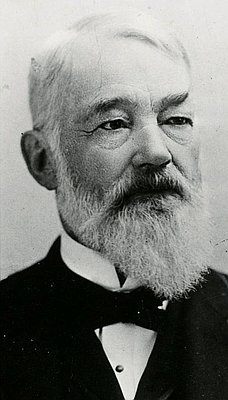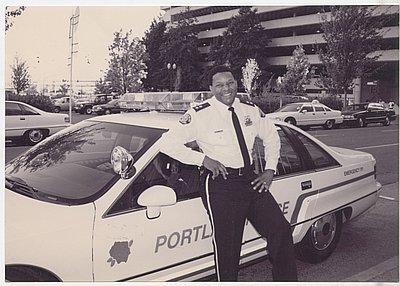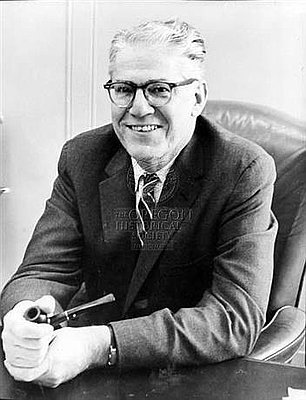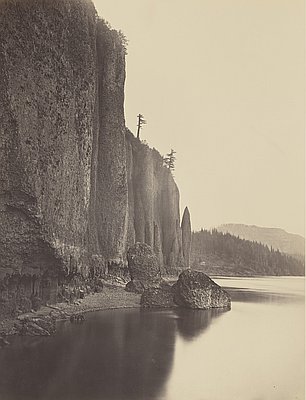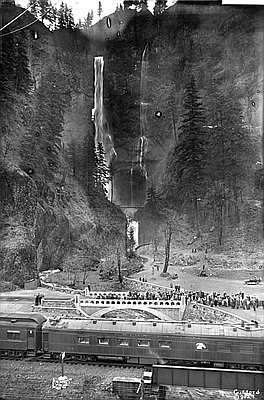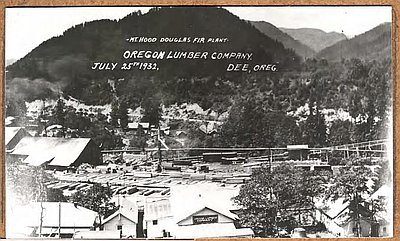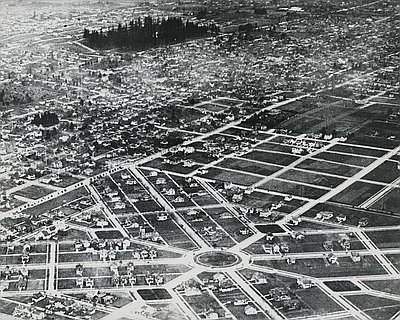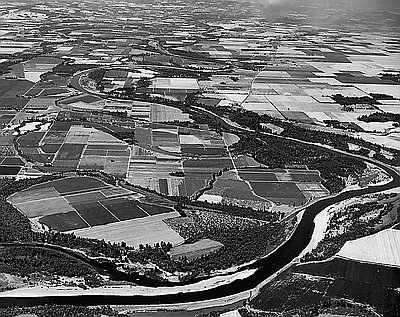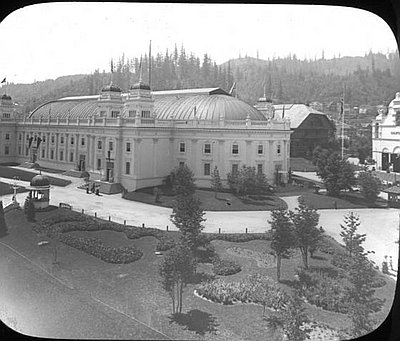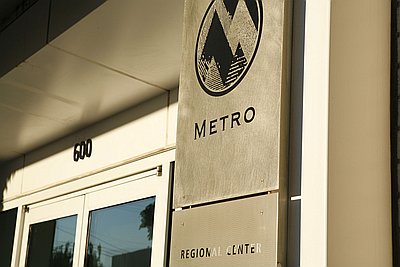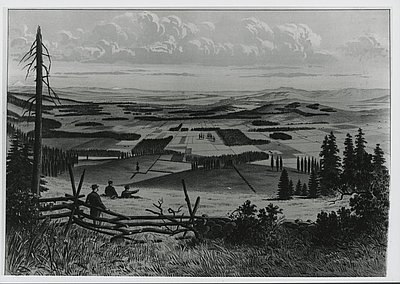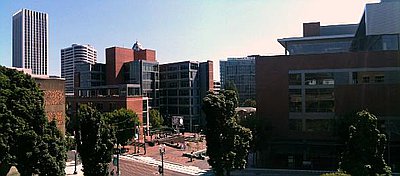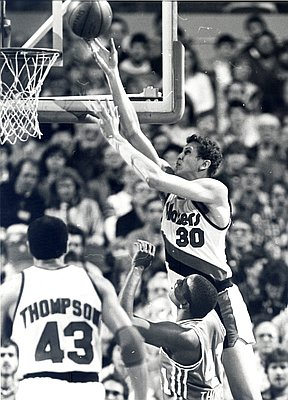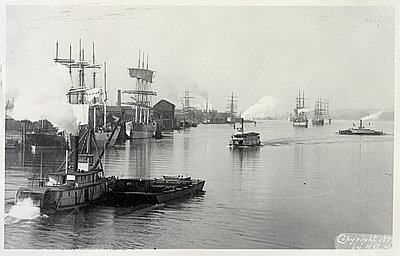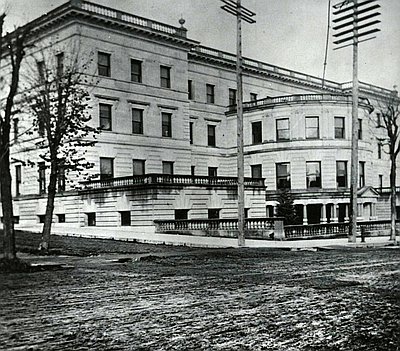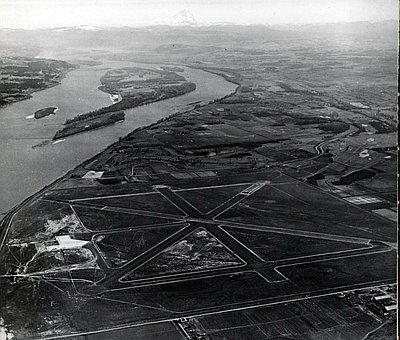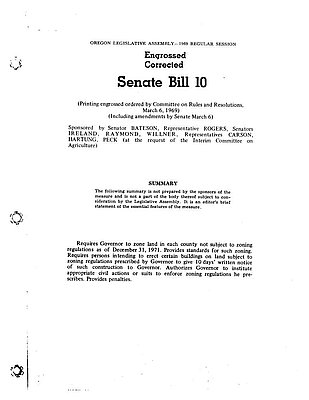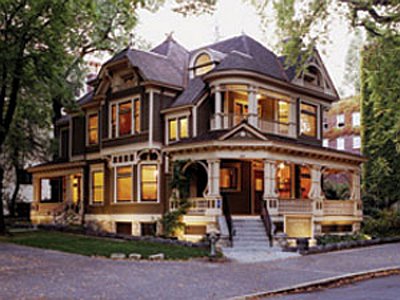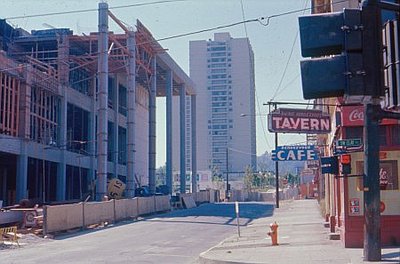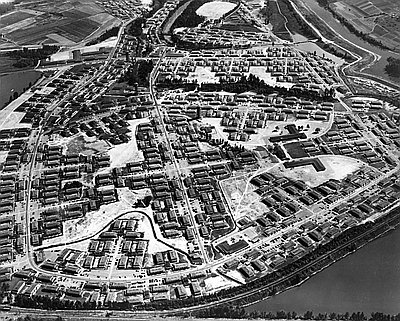Carl Abbott
Carl Abbott taught urban studies and planning at Portland State University in five decades (but not for fifty years). He has written extensively on the history of Portland and the Pacific Northwest and has been active as a board member of a number of community groups, including the Oregon Encyclopedia, the Historic Preservation League of Oregon, the Oregon Downtown Development Association, Livable Oregon, and Chamber Music Northwest. In addition to scholarly work, his writing appears in a number of regional and national publications.
Author's Entries
-
![Benjamin Stark (1820-1898)]()
Benjamin Stark (1820-1898)
Benjamin Stark was a merchant, land speculator, and politician active in Oregon from 1845 to 1862. He played a central part in the early development of Portland and was deeply involved in the controversies that divided Oregon and national politics in the Civil War era. Stark was “dapper, shrewd and …
Oregon Encyclopedia
-
![Charles Alexander Moose (1953–2021)]()
Charles Alexander Moose (1953–2021)
Charles Moose was the first African American to hold the position of Chief of Police in Portland and, at age thirty-nine, one of the youngest. He was also the only chief with a doctoral degree. During his tenure from 1993 to 1999, Portland became known for the effectiveness of its …
Oregon Encyclopedia
-
![Columbia Region Association of Governments (CRAG)]()
Columbia Region Association of Governments (CRAG)
The Columbia Region Association of Governments (CRAG) was the regional planning agency for Multnomah, Washington, Clackamas counties of Oregon and Clark County, Washington, from 1966 to 1978. As such, it was one of the predecessors of Metro, along with the Metropolitan Service District (MSD). CRAG was a council of …
Oregon Encyclopedia
-
![Columbia River Gorge]()
Columbia River Gorge
The Columbia River Gorge is a striking natural landscape of mountains, bluffs, and cliffs that border the Columbia River as it passes through the Cascade Range. The Gorge has been a barrier and then an artery for the movement of people and goods, a zone of changing economic activity, …
Oregon Encyclopedia
-
![Columbia River Gorge National Scenic Area]()
Columbia River Gorge National Scenic Area
Established by Congress in 1986, the Columbia River Gorge National Scenic Area extends eighty-five miles along both sides of the Columbia River, from the Sandy River to the Deschutes River, and extends between one and four miles from the river in Oregon and Washington. The legislation provided protection for …
Oregon Encyclopedia
-
![Community of Dee]()
Community of Dee
Dee refers to a lumber-mill town located on the Middle Fork of the Hood River, occupied from 1906 to 1959, and to the adjacent orchard district sometimes known as Dee Flat. The town site lies along Oregon Highway 281 ten miles southwest of the town of Hood River. Dee …
Oregon Encyclopedia
-
![Ladd's Addition]()
Ladd's Addition
Ladd's Addition is a streetcar-era neighborhood in southeast Portland with a street and park plan that is unique among neighborhoods of comparable age in the United States. The plan for the neighborhood, which is located between Southeast Hawthorne and Division Streets and Southeast Twelfth and Twentieth Avenues, has been protected …
Oregon Encyclopedia
-
Land Use Planning
In 1973, Oregon took a pioneering step in land use planning. Signed into law on May 29, 1973, Oregon Senate Bill 100 created an institutional structure for statewide planning. It required that every Oregon city and county prepare a comprehensive plan in accordance with a set of general state goals. …
Oregon Encyclopedia
-
![Lewis and Clark Exposition]()
Lewis and Clark Exposition
Portland staged its first and only world's fair from June 1 through October 15, 1905. During those four and a half months, 1,588,000 paying visitors passed through the gates to the 400-acre fairgrounds on the northwest edge of town. More than 400,000 were from outside the Pacific Northwest, a huge …
Oregon Encyclopedia
-
![Metro Regional Government]()
Metro Regional Government
Metro is a regional agency that serves the urbanized portions of Multnomah, Clackamas, and Washington counties. It deals with land use and transportation planning and administers a grab bag of regional services. The roots of Metro lie in the Metropolitan Planning Commission (1957-1966), which undertook data inventory and studies of …
Oregon Encyclopedia
-
![Newberg]()
Newberg
Newberg, the second largest city in Yamhill County, is located about a mile north of a northerly bend in the Willamette River. The city is located in the eastern part of the county, about twenty-three miles southwest of Portland and fourteen miles northeast of McMinnville. The development of …
Oregon Encyclopedia
-
![Nohad Toulan (1931–2013)]()
Nohad Toulan (1931–2013)
Nohad Toulan put his stamp on the College of Urban and Public Affairs, Portland State University, the city of Portland, and many other cities, from Cairo to Makkah (also known as Mecca). A patient and long-term thinker, he was part of every important conversation about the future directions for …
Oregon Encyclopedia
-
![Paul Allen (1953–2018)]()
Paul Allen (1953–2018)
Paul Allen had an impact on Oregon, both as owner of the Portland Trail Blazers and as co-founder of the business giant, Microsoft Corporation. Allen was born in Seattle in 1953, and he met fellow Microsoft founder Bill Gates when Allen was in ninth grade and Gates was in seventh. …
Oregon Encyclopedia
-
![Port of Portland]()
Port of Portland
The Oregon Legislature created the current Port of Portland in 1970 by merging the original Port of Portland, a public corporation dating from 1891, and the Portland Commission of Public Docks, a city agency dating from 1910. In 1973, the consolidated Port became a tricounty agency serving Multnomah, Clackamas, …
Oregon Encyclopedia
-
![Portland]()
Portland
Portland, with a 2020 population of 652,503 within its city limits and 2,226,009 in the seven-county metropolitan area, was platted on the west bank of the Willamette River in 1845 on lands used traditionally by Multnomah Chinooks. The area received its first few dozen English-speaking settlers in 1846. Maine native …
Oregon Encyclopedia
-
![Portland Commission Government]()
Portland Commission Government
Portland's commission form of municipal government, which the city adopted as a progressive innovation in 1913, was a rarity and relic by the twenty-first century. Despite Portland’s reputation for innovation in other realms, voters for more than a century stubbornly stuck with the basic structure in which a …
Oregon Encyclopedia
-
![Portland International Airport]()
Portland International Airport
Portland has used two locations for its major commercial airport—Swan Island from 1927 to 1940 and the floodplain of the Columbia River since 1940. The second site has seen repeated adjustments of runways and expansions and upgrades of terminal facilities. In 2016, it served more than 17 million passengers …
Oregon Encyclopedia
-
Rajneeshees
Bhagwan Shree Rajneesh, a spiritual teacher who developed a substantial international following in Pune, India, decided in 1981 to relocate to the United States. While investigating possible sites, he and his chief lieutenant, Ma Anand Sheela, visited the 64,000-acre Muddy Ranch in southern Wasco County, decided that it was the …
Oregon Encyclopedia
-
![Senate Bill 100]()
Senate Bill 100
Signed into law on May 29, 1973, Oregon Senate Bill 100 created an institutional structure for statewide planning. It required every Oregon city and county to prepare a comprehensive plan in accordance with a set of general state goals. While preserving the principle of local responsibility for land-use decisions, it …
Oregon Encyclopedia
-
![Simon Benson (1851-1942)]()
Simon Benson (1851-1942)
Simon Benson gave his name to a Portland high school, a Portland hotel, and twenty brass water fountains in Portland's downtown. A classic American success story in the wide-open economy of the early Northwest, he had a significant impact as an innovative timberman and philanthropist. Simon Berger Iverson was born …
Oregon Encyclopedia
-
![South Portland/South Auditorium Urban Renewal Project]()
South Portland/South Auditorium Urban Renewal Project
In 1955, a Mayor’s Advisory Committee identified the blocks at the southeast end of downtown Portland—bounded by Market, Front, Arthur, and Fourth—as suitable for a land clearance and redevelopment project. Civic leaders wanted to use new federal legislation that had expanded the Housing Act of 1949 to include what …
Oregon Encyclopedia
-
![Vanport]()
Vanport
In its short history, from 1942 to 1948, Vanport was the nation’s largest wartime housing development, a site for social innovation, a lightning rod for racial prejudice, and the scene of one of Oregon’s major disasters.Between 1940 and 1943, defense employment in the Portland and Vancouver area climbed from …
Oregon Encyclopedia




